MAE 3303 Aerodynamics of Compressible Flow
Homework 5 Solution
Answers to Study Questions
- Under what conditions do the oblique shock relations reduce to
the normal shock relations?
ans: When wave angle b = p/2.
- Under what conditions do the oblique shock relations reduce to
the change in properties across a Mach wave?
ans: When the wave angle equals the Mach angle (b = m).
- How will b vary with Mach number for a fixed turning angle
(q)? Assume that the weak attached solution prevails.
ans: The wave angle b will decrease with Mach number for a fixed turning
angle q.
- For a fixed Mach number, how will the shock strength vary with
the flow turning angle? Assume that the weak attached solution prevails.
ans: The shock strength will increase with turning angle q for a fixed
Mach number.
- What is the advantage of using a sequence of oblique shocks to
compress a gas as opposed to a single normal shock?
ans: A sequence of oblique shocks can compress the gas the same amount (or more)
than a normal shock but with much lower losses in total pressure.
- Why is loss in total pressure synonymous with inefficiency?
ans: Loss in total pressure equates to an increase in entropy and thus is a
direct measure of the degree of irreversibility or efficiency.
- Why are supersonic jet engine inlets almost always designed to
operate with oblique shocks?
ans: In order to minimize losses in total pressure.
- Is the flow over a cone in supersonic flight two dimensional?
Explain your answer.
ans: No. The streamlines curve between the shock and the body surface.
(This is a direct consequence of the difference in area between the conical
shock and the cone surface.)
- Which body produces a stronger shock, a wedge or cone of the same
angle? What accounts for the difference?
ans: A wedge will produce a stronger shock. The cone has a weaker shock since
the flow has the opportunity to adjust between the shock and the cone surface.
- Which body compresses the gas more, a wedge or cone of the same
angle? What accounts for the difference?
ans: A wedge will compress the gas more. This is because the wedge produces
a stronger shock as explained in the previous answer.
- Why will an oblique shock almost always reflect off a solid
boundary?
ans: In order to change the flow angle so that is is parallel to the boundary
downstream of the reflected shock.
- How is the turning angle specified for the reflected shock?
ans: The flow must be turned parallel to the boundary.
- What will happen if the turning angle for the reflected shock
is greater than qmax?
ans: An oblique shock is not possible and a normal shock will form.
- What shock configuration is generated when oblique shocks of
opposite families (right- as opposed to left-running) intersect?
ans: A refraction where the wave angles and shock strengths change downstream
of the intersection point.
- What shock configuration is generated when oblique shocks of
the same family intersect?
ans: A convergence where the shocks merge together to form a single stronger
shock.
- Each streamline passing through a curved bow shock ahead of a
blunt object corresponds to a particular point on the b-q curve.
Explain how every possible solution on the b-q curve
is realized by considering all streamlines from the stagnation streamline
to one infinitely far away from the body.
ans: The stagnation streamline passes through the shock at a right angle and
thus is the solution on the upper left hand corner of the b-q curve.
The wave angle then decreases continually until the Mach angle is reached
infinitely far away from the body. This continuous change in the wave angle
corresponds to moving along the b-q curve from the upper left hand
corner to the lower left hand corner.
- When a detached bow shock forms, which oblique shock solution
applies in the region close to the stagnation streamline?
ans: The strong solution.
- Why is a subsonic region formed near the nose of a blunt
body in supersonic flow?
ans: Since the wave angle is close to p/2, the strong solution with a
subsonic flow downstream is found.
- How will the temperature near the nose of a blunt body in
supersonic flow compare with the temperature near the tip of a cone
at the same flow conditions? Explain your answer. Assume that the cone
leads to an attached shock.
ans: Since the flow is stagnant at the nose of both bodies,
the temperatures would be the same if the flow is adiabatic ($T_0$=const). At high $M$,
radiation from the hot gas behind the bow shock in the case of a blunt body is a source
for heat transfer and will result in a drop in stagnation temperature. This will
in turn lead to a lower temperature at the stagnation point
- Can you think of any reason why re-entry vehicles are generally
quite blunt?
ans: in order to create a strong normal shock and thus produce a large amount
of drag that is used to slow the object.
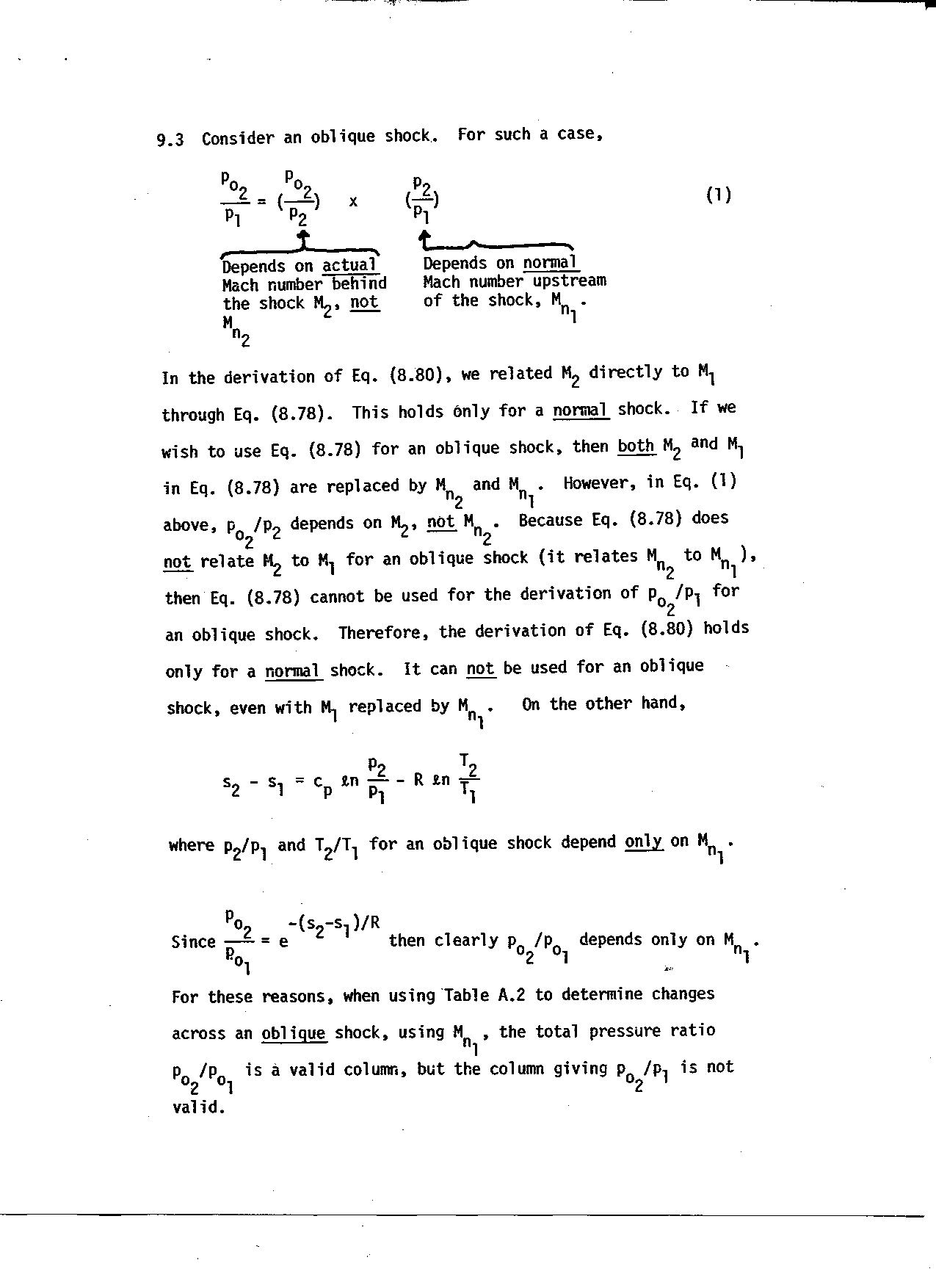
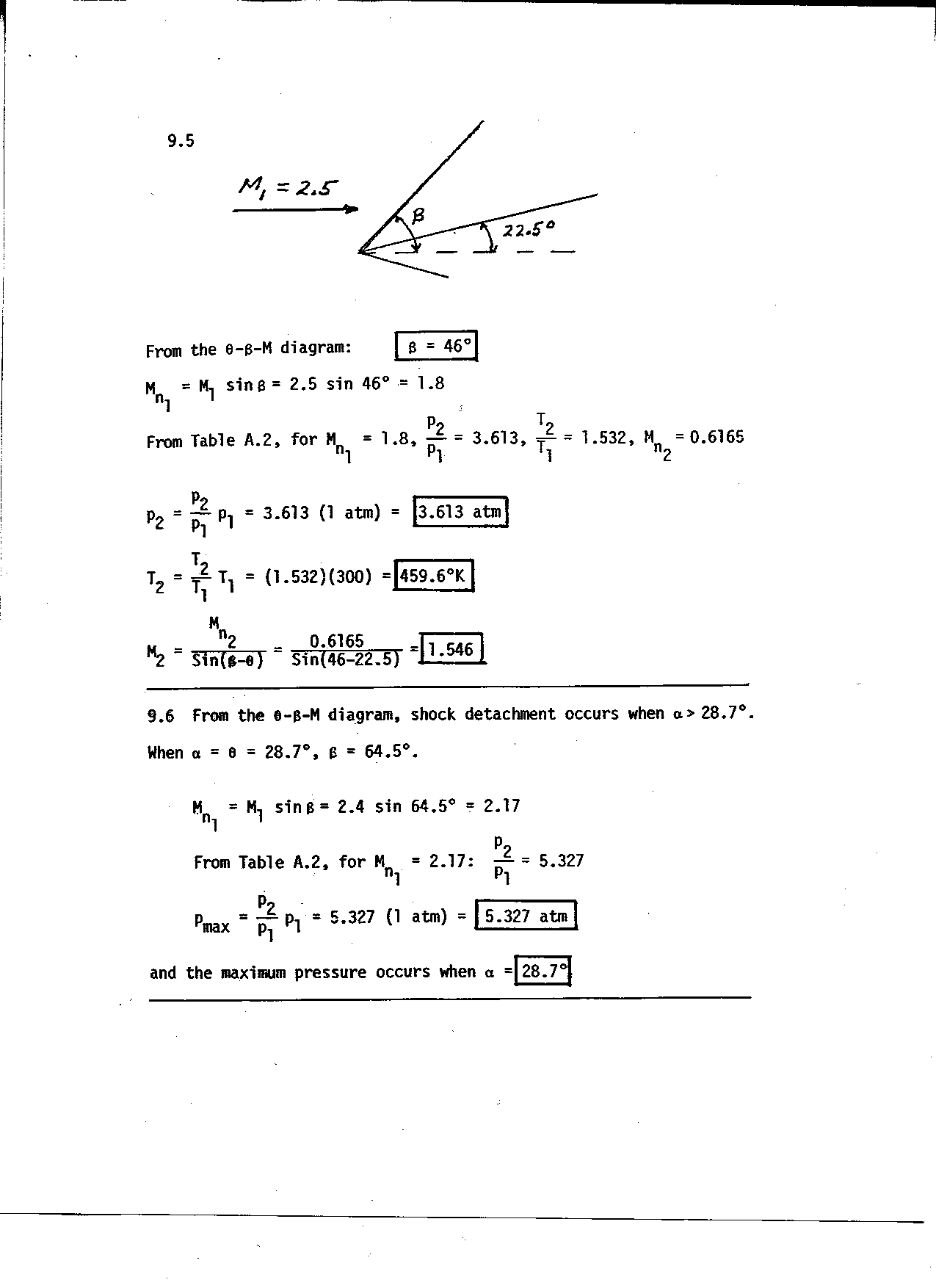
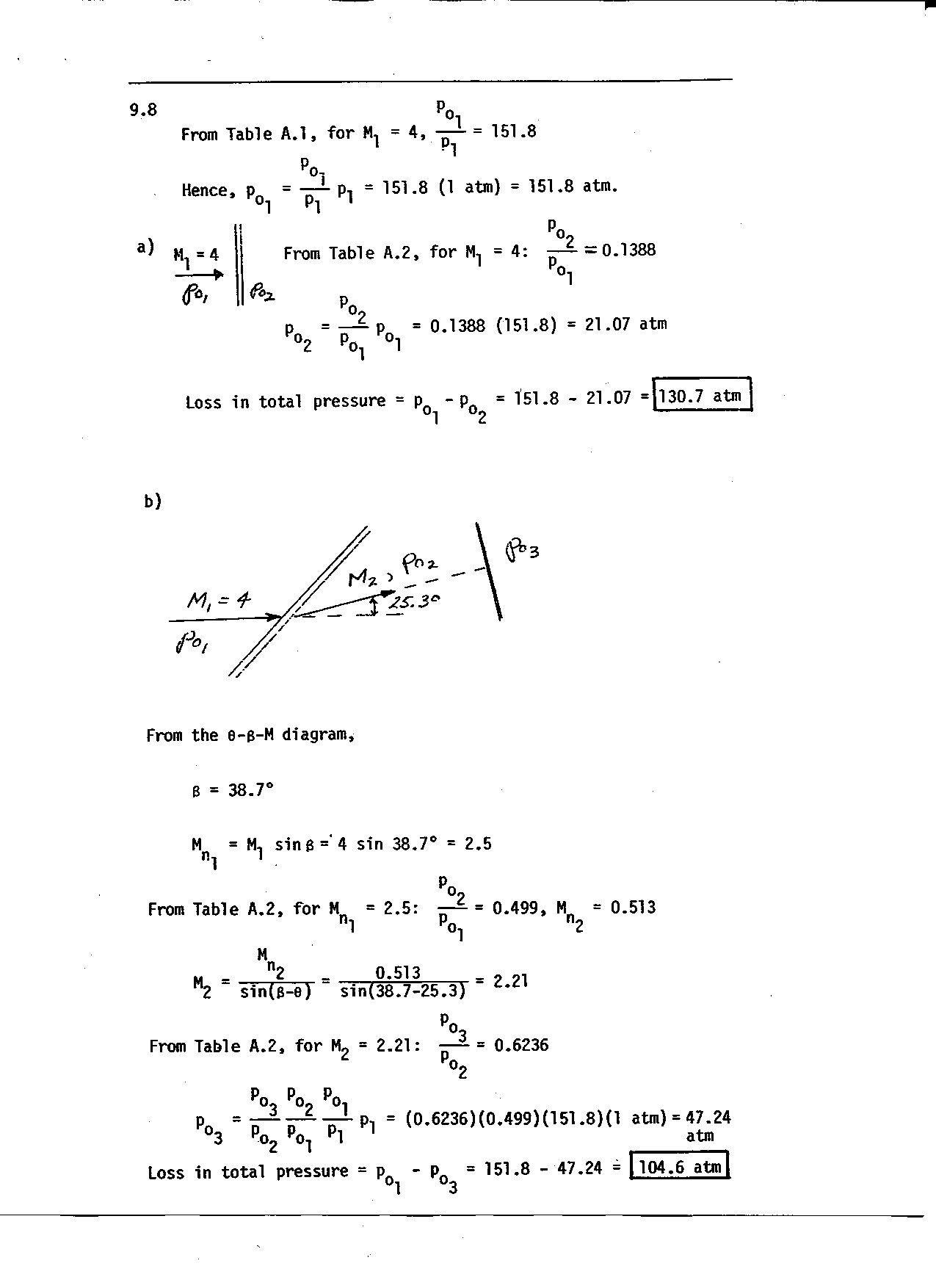
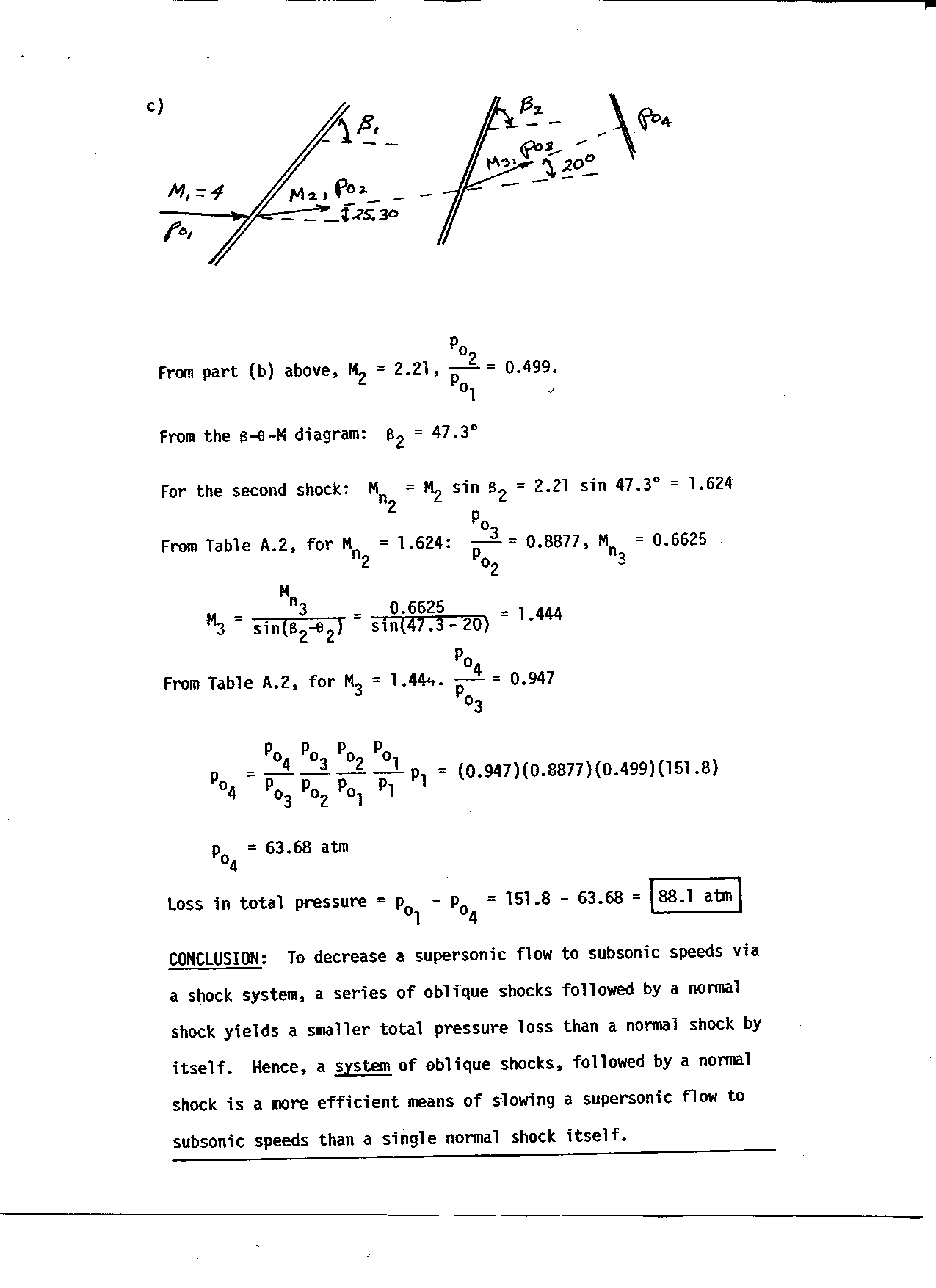
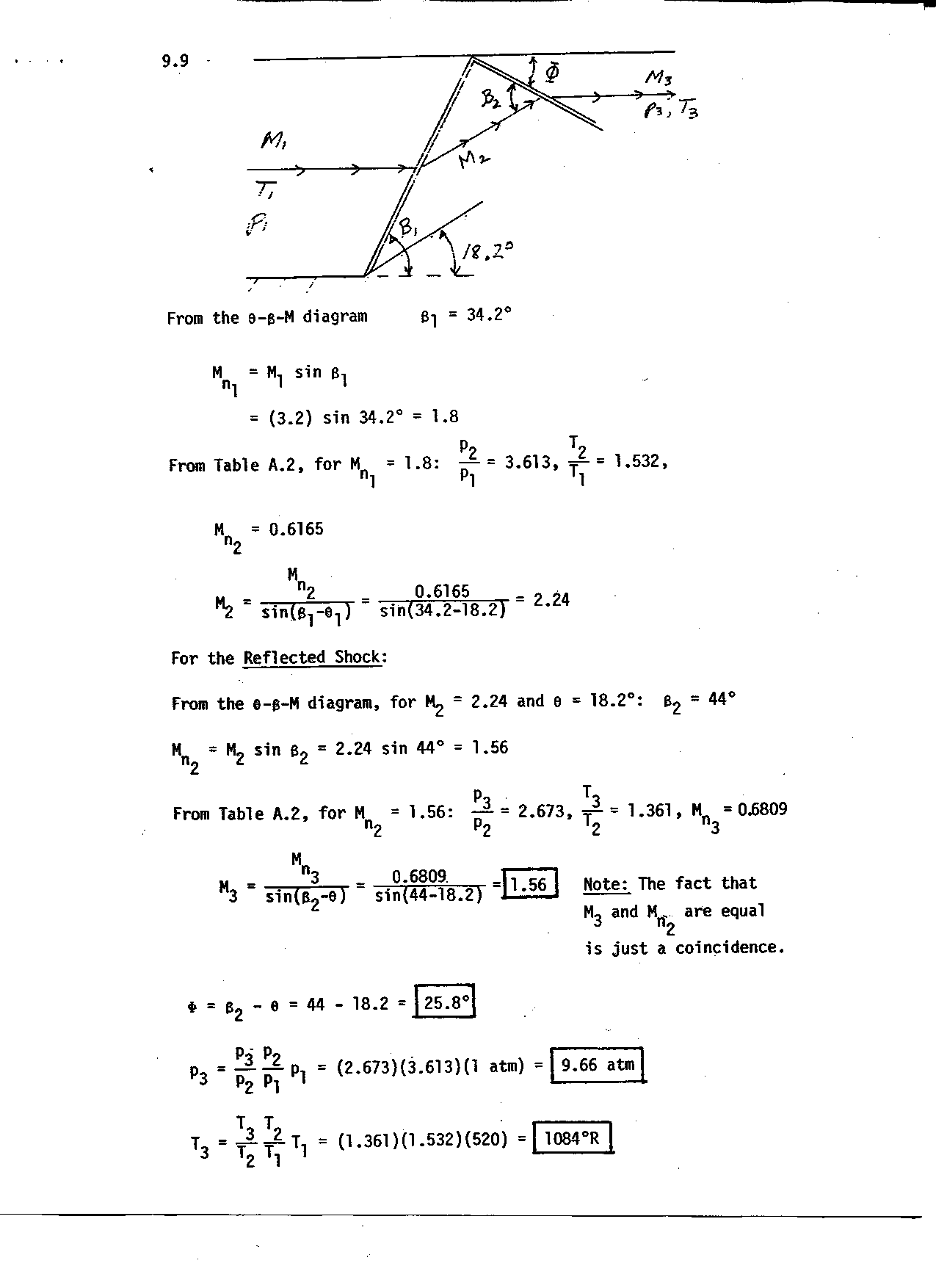
File translated from TEX by TTH, version 2.00.
On 9 Mar 2000, 11:02.





